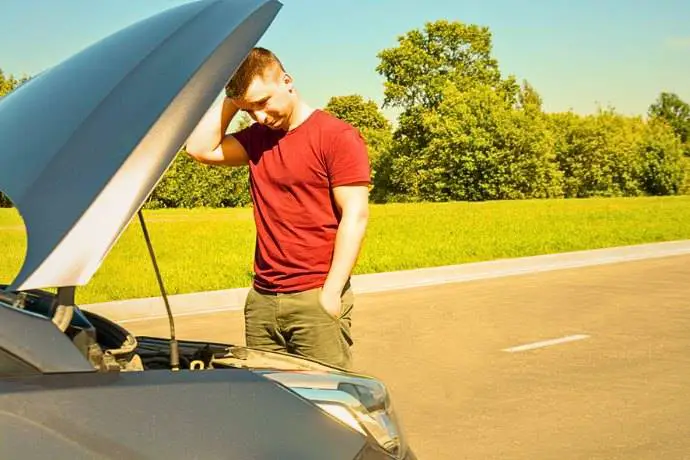The Chevrolet Silverado is the most popular pickup truck among truck lovers. It is known for its durability and reliability. However, like any other vehicle, it is not free from problems.
One of the problems that many owners have reported with the Silverado is that it will not start after installing a new battery. If you have recently installed a new battery in your Silverado and it’s still not starting, don’t panic.
There are a few common causes for this, most of which are relatively simple to resolve. In this article, I have discussed the most common causes of a Chevy Silverado that won t start after new battery, its symptoms, and solutions.
10 most common problems that cause Silverado not to start after a new battery include a faulty new battery, a dead alternator, a failed starter, corroded battery terminals, a faulty ignition switch, a bad fuel pump, a clogged fuel filter, and other problems.
1. Faulty New Battery
It is very rare for a new battery to be faulty, but it can happen. So, if your Silverado does not start after installing a new battery, check the battery first to avoid unnecessary repair or work.
A new battery can be defective or damaged by improper handling or transport. The most common reasons a new battery is defective are manufacturing defects, improper storage, and transportation damage.
A faulty new battery causes it to not start by failing to provide the necessary power to the starter motor.
4 Symptoms of a Faulty Battery
- The engine cranks slowly or not at all.
- Dim dashboard lights.
- The battery seems to be hot to the touch.
- Strong sulfur smell coming from the battery.
How to Diagnose a Faulty New Battery
- Visual Inspection: Check the new battery visually for any physical damage, such as cracks, bulges, or leaks. If there is any damage, you should replace the battery.
- Voltage Check: Use a voltmeter to check the battery voltage. The battery charge should be 12.6 volts when fully charged. If the voltage is below 12.2 volts, the battery seems to be discharged. In this case, try to jump-start the vehicle. If the truck starts and runs normally, the battery is faulty.
- Check in a Repair Shop: You can also have the battery tested at a local auto repair shop.
- Check the Date: Check the battery manufacturing date and ensure it is not too old.
Solution
If the battery is still under warranty, contact the manufacturer for a replacement. If the battery is not under warranty, you should purchase another new battery. When installing a new battery, properly connect the positive and negative terminals, clean the terminals, and remove any corrosion.
2. Dead Alternator
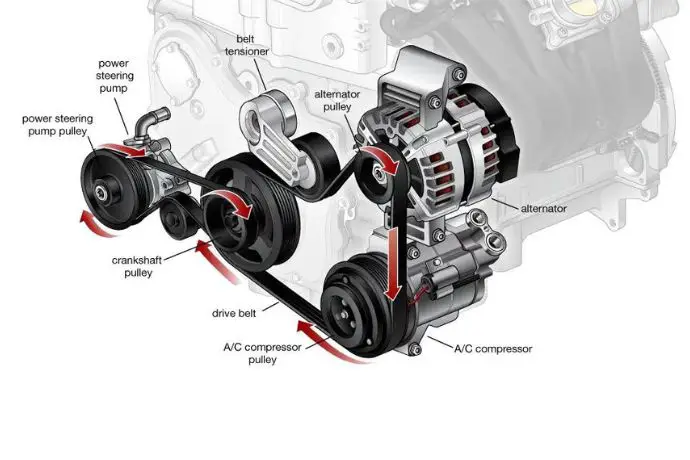
When the engine is running, the alternator charges the battery. If the alternator fails, the battery will eventually run out of power, and the engine will not start. If the alternator is dead, your truck will not start even if you install a new battery.
4 Symptoms of a Dead Alternator
- Dim headlights and interior lights.
- Battery warning light on the dashboard.
- Difficulty starting the engine.
- Engine stalling while driving.
How to Diagnose a Dead Alternator
There are 2 ways to diagnose a dead alternator. One way is to check the battery voltage with a voltmeter. The battery voltage should be around 12.6 volts when the engine is not running.
If the voltage is below 12.6 volts, it means the battery is dead, or the alternator is not working properly. Another way to diagnose a dead alternator is to start the engine and check the battery voltage.
The voltage should be 14.2 volts when the engine is running. If it is below 14.2 volts, the alternator is not working properly.
Watch the video given below to learn how to test an alternator without a multimeter:
How to Fix a Dead Alternator
If you suspect the alternator is dead, the best way is to take your vehicle to a professional mechanic for proper diagnosis and repair. The mechanic can test the alternator and determine whether it needs repairing or replacing.
3. Failed Starter
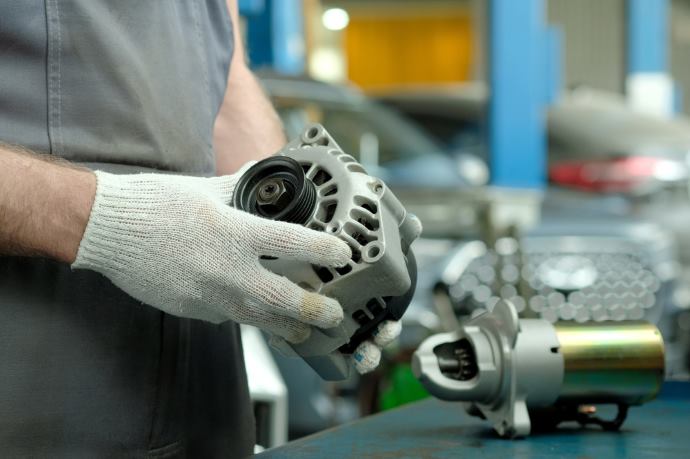
The starter motor cranks the engine over when drivers turn the key in the ignition. If the starter motor fails, the engine will not start, even if you have a new battery.
There are 4 common reasons why a starter motor fails.
- Wear and tear
- Electrical problems
- Heat damage
- Overloads
3 Symptoms of a Failed Starter
- The engine does not crank.
- Clicking sound when turning the key in the ignition.
- The engine cranks over normally but does not start.
How to Diagnose a Failed Starter
Generally, I use 2 methods to diagnose a failed starter.
First, listen for a clicking sound when turning the key in the ignition. If a clicking sound occurs, but the engine does not crack over, it indicates the starter motor has some problem.
The second method is to diagnose a failed starter motor using a voltage meter. In this method, check the voltage at the battery posts while trying to start the engine. If the voltage drops below 10 volts, the starter motor is likely drawing too much current, which is the problem.
How to Fix a Faulty Starter Motor
The best way to fix a faulty starter motor is to replace it. Take your vehicle to a repair shop and replace it.
Replacing a starter motor will cost around $180 to $1,050, including the mechanic charge.
However, if you have some mechanical knowledge, you can replace it, costing around $90 to $370.
Watch the following video to learn how to replace the starter motor by yourself:
4. Corroded Battery Terminals
Corroded battery terminals may cause your truck to not start by preventing a good electrical connection between the battery and the starter motor. Visually inspect the battery terminals for signs of corrosion.
If the terminals are covered in a white or green powder crust or are hot to the touch, it indicates they are corroded.
How to Clean Corroded Battery Terminals
You need 5 items to clean corroded battery terminals:
- Safety glasses
- Rubber gloves
- A wire brush
- Baking soda
- Water
Now follow these 7 steps to clean corroded battery terminals:
- Remove the negative and positive battery terminals.
- Use the wire brush to clean the battery terminals and posts until they are corrosion-free.
- Mix a paste of baking soda and water.
- Apply the baking soda paste to the terminals.
- After a minute, clean the battery terminals and battery posts with water.
- Dry the terminals and battery posts with a clean towel.
- Now, connect the positive battery terminal first, then the negative one.
Now, start your pickup truck. If it starts normally, then you have successfully solved the problem.
Watch the video for a visual demonstration of how to clean corroded battery terminals:
5. Faulty Ignition Switch
When the key is turned to the “start” position, the ignition switch supplies power to the starter motor and other electrical components in the vehicle. If the ignition switch is faulty, it cannot supply the electricity properly, and the vehicle does not start, even after the battery is new.
3 Symptoms of a Faulty Ignition Switch
- The engine won’t start.
- Sometimes, the engine turns over but won’t start.
- The ignition key is difficult to turn.
How to Diagnose a Faulty Ignition Switch
- Check the ignition switch terminals for corrosion.
- Use a test light to check for power at the ignition switch. If there is no power, then the ignition switch is faulty.
- Try jiggling the ignition key while turning it to the “start” position. If the engine starts, the ignition key is worn and needs to be replaced.
How to Fix Faulty Ignition Switch
If you find the ignition switch faulty, you must replace it. It is a relatively simple repair, and you or an auto mechanic can easily do it.
Replacing the ignition switch of a Silverado pickup truck costs around $150 to $500, including labor charges.
6. Bad Fuel Pump
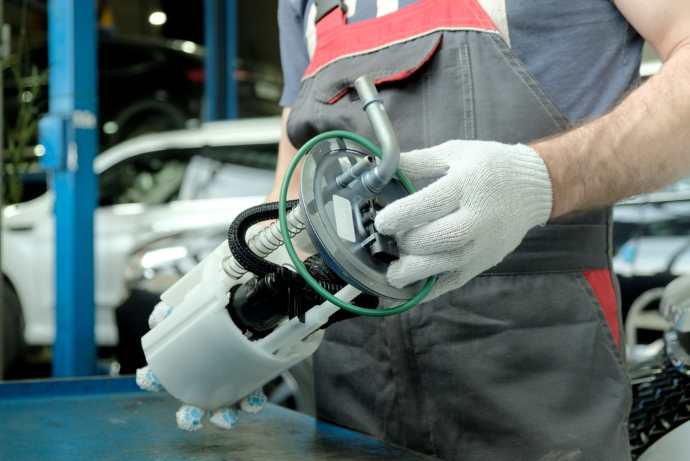
A bad fuel pump is also responsible for a Silverado not starting even after a new battery. The fuel pump supplies fuel to the engine. If the fuel pump is not working correctly, the engine will not have enough fuel to start.
5 Symptoms of a Bad Fuel Pump
- Engine hesitation
- Hard starting or stalling
- Reduced engine power
- Whining noise from the fuel tank
- Decreased fuel economy
How to Diagnose a Bad Fuel Pump
There are 3 ways to diagnose a bad fuel pump:
1. Listen for a whining noise from the fuel tank. The fuel pump might be faulty if a whining noise appears when turning the key to the on position.
2. Use a fuel pressure gauge to check the fuel pressure at the fuel rail. The fuel pressure should be within a certain range [check your Silverado’s owner’s manual for the specific range]. If the pressure is outside of the specified range, it indicates that the fuel pump is failing.
3. Check the fuel filter. If the fuel filter is clogged, it will cause a problem, and the filter needs to be replaced.
How to Fix a Bad Fuel Pump
Take your Chevrolet Silverado to a repair shop to fix a faulty fuel pump. However, I recommend replacing the faulty fuel pump, which is the best option to avoid other problems. The replacement cost of the Chevrolet Silverado 1500 fuel pump is around $1,350 to $2,000.
7. Clogged Fuel Filter
A clogged fuel filter is responsible for the Silverado not starting because a clogged fuel filter prevents fuel from reaching the engine. As a result, the engine will not get enough fuel to start.
5 Symptoms of a Clogged Fuel Filter
- Difficulty starting the engine
- Rough idle
- Reduced fuel efficiency
- Engine stalling
- Black smoke from the exhaust
Diagnosing a Clogged Fuel Filter
Diagnosing a clogged fuel filter is a relatively easy process.
Follow these 4 steps to diagnose a clogged fuel filter.
- First, check the fuel pressure.
- If the fuel pressure is low, it is a sign of a clogged fuel filter.
- Then, inspect the fuel filter normally.
- If the fuel filter is dirty or clogged, it needs to be replaced.
How to Fix a Clogged Fuel Filter
Replace the fuel filter if you already drive 20,000 to 35,000 miles with it.
Watch this video to replace Silverado’s fuel filter:
8. Loose Battery Cables
If the battery cables are loose, they prevent the battery from providing enough power to the starter motor. Therefore, the truck does not start even after a new battery.
So, when installing a new battery in your Silverado, ensure all the cables are connected correctly and tightly. If the new battery is already installed, check the cables and tighten them with the help of a wrench or socket. Then, start your truck to see if it starts normally.
9. Bad Spark Plugs
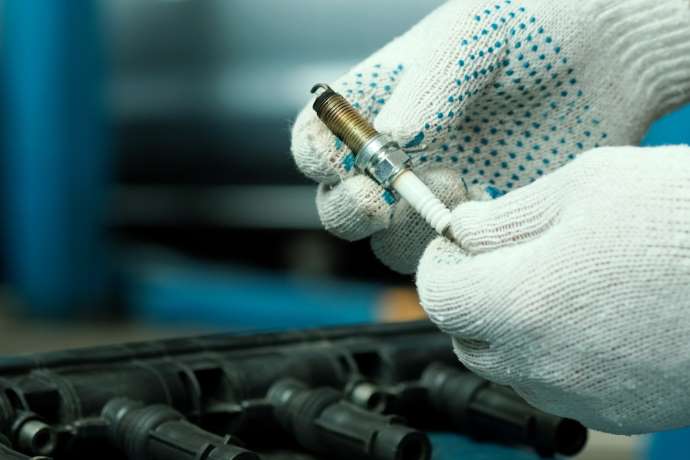
An engine’s spark plug ignites the fuel by creating a spark. If the spark plugs are bad, they may not be able to create a strong enough spark to ignite the fuel and cause the engine not to start.
When the spark plugs wear down, the gap between the electrodes becomes too large, and the spark becomes weaker.
How to Fix Faulty Spark Plugs
Replacement is the best option when spark plugs become faulty. The replacement cost of Silverado 1500 spark plugs is typically $300.
10. Faulty Ignition Cell
The ignition cell is a small cylindrical component located in the ignition switch. It sends a signal to the starter motor to crank the engine. If the ignition cell is faulty, the starter motor won’t be able to receive the signal, and the engine won’t start.
Solutions
Replace the ignition cell to fix the problem.
How to Prevent a Chevy Silverado from not Starting?
You can prevent the Chevy Silverado from starting by following these 4 instructions:
- Keep the battery terminals clean and tight.
- Have the starter and alternator tested regularly.
- Replace the fuel pump if it is starting to show signs of wear and tear.
- Ensure the ignition switch is inspected regularly.
Final Thoughts
You should keep your truck’s performance at its peak by performing regular servicing. If your Chevy Silverado doesn’t start after a new battery, examine the mentioned causes from start to end.
If you are uncomfortable troubleshooting the problem, take your vehicle to a repair shop for a proper diagnosis and repair.

